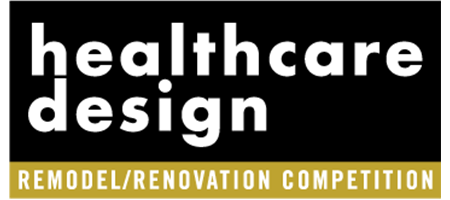In May 2017, Dr. Ņikita Bezborodovs traveled from Latvia to Finland to take part in the European Hospital and Healthcare Federation’s HOPE Exchange Programme. During his month abroad, he toured Tampere University Hospital in Tampere, Finland, where he was inspired by a new kidney center and the facility’s integration of art and design into the healthcare facility.
“They had a concept of water circulation … for example, an art installation going through all floors of the building depicting a ‘fountain of youth,’” he says.
Taking that idea back home, he found an opportunity to employ a similar strategy during the redesign of the Child and Youth Mental Health Center at Children’s Clinical University Hospital in Riga, Latvia, where he is the chief specialist in child psychiatry and head of the center.
The children’s behavioral health center, which offers diagnosis and treatment for mental, behavioral, and neurodevelopmental disorders, was part of an inpatient unit housed in a 1980s era building that was not part of the main hospital campus. In 2018, Riga-based architecture firm NAMS was selected to design a new 45,540-square-foot facility—approximately four times the size of the existing center—on the hospital’s main campus.
The 3-story center opened in December 2023 with outpatient services on the first floor, four inpatient wards on the second floor, and office space for specialists on the third floor.
Prioritizing wayfinding in clinic interiors
From the start of the project, hospital administrators and architects sought input from Bezborodovs and other doctors regarding what was needed for the facility.
Recalling his inspiring trip to Finland, he sought to involve an interior designer on the project to help deliver a cohesive interior design and address some of the issues patients and clinicians had faced in the previous facility. (There was no room in the budget for interior design services, so charitable donations were raised to make it possible.) For example, even at a smaller footprint, the previous facility was difficult for young patients and their families to navigate.
For the new center, Inguna Elere, chief development officer and creative lead at H2E (Riga), the interior design studio on the project, says the project team focused on simplifying signage to ease navigation, including small digital screens outside patient rooms that can display multiple messages. The strategy reduces clutter in the hospital and supports efforts to deliver a comforting care environment.
In early conversations with the interior designers, Bezborodovs says he came up with the idea for a butterfly theme to carry throughout the project. The Greek word for butterfly is “psyche” and butterflies have become a symbol associated with mental health.
The H2E team expanded on that idea, incorporating it into the wayfinding strategy. Appearing to be drawn by hand in graphite, graphics of different varieties of native Latvian butterflies are featured on each floor and in each department and ward of the center.
“In this post-COVID era, it’s important for children to feel something real, to have something natural to touch,” Timosko says.
Children are encouraged to follow the flight patterns of the butterflies, leading from one area to another, such as up the stairwell from the first floor to the second, represented by dotted lines that they can trace with their finger as they go, says Ieva Timosko, H2E’s graphic designer on the project.
Sensory considerations in behavioral health facilities
The interior design of the children’s behavioral health center also prioritizes sensory elements to offer positive distractions, including wall art and interactive touch screens. A “sound shower” in a waiting area projects nature sounds directionally to a marked spot on the floor.
Since its opening, the center has become known locally as the “Butterfly House,” Elere says. “The brightness of butterfly wings represent a joyful flight, or journey toward healing, and the life cycle of a butterfly symbolizes the path of personality development,” she says.
Robert McCune is senior editor at Healthcare Design magazine and can be reached at [email protected].











